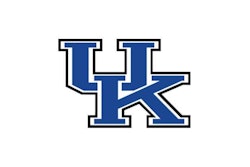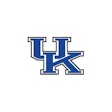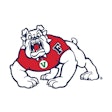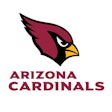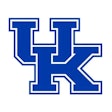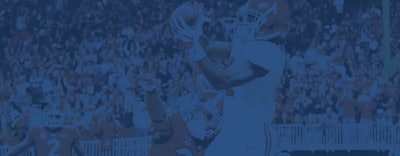
In 1984, a group of colleges and universities challenged the National Collegiate Athletic Association's control over how many times a school's football games could be televised each year.
In ruling that the NCAA's television plan constituted illegal price fixing and was therefore a violation of the Sherman Antitrust Act, the United States Supreme Court in NCAA v. Board of Regents 468 U.S. 85 (1984) also noted that "the NCAA plays a critical role in the maintenance of a revered tradition of amateurism in college sports. There can be no question but that it needs ample latitude to play that role, or that the preservation of the student-athlete in higher education adds richness and diversity to intercollegiate athletics and is entirely consistent with the goals of the Sherman Act."
As a result of that one line in a 41-page decision, courts over the past 37 years have generally given the NCAA "ample latitude" and allowed the organization to restrict the benefits students received as reasonable "in the maintenance of ... amateurism."
In recent years, beginning with O'Bannon v. NCAA, 7 F. Supp. 3d 955 (N.D. Cal., 2014), the NCAA has faced a series of antitrust lawsuits challenging the organization's rules limiting "compensation" to athletes. And while the NCAA has suffered a series of minor setbacks, the courts have generally refused to strike down the NCAA's longstanding amateur model completely. Instead, the courts forced the NCAA to incrementally provide student-athletes with more benefits, such as full cost of attendance, albeit without directly paying the athletes.
The latest challenge to the NCAA's amateur sports model, NCAA v. Alston, 141 S. Ct. 2141 (2021), represented the first time since NCAA v. Board of Regents that the Supreme Court weighed in on the question of whether the NCAA's rules limiting educational benefits and compensation to athletes violated federal antitrust laws.
Preserving college sports
In NCAA v. Alston, a group of current and former athletes who played in Division I's Football Bowl Subdivision and others who played Division I men's and women's basketball challenged the NCAA's rules limiting compensation. The athletes claimed that the NCAA's rules violated federal antitrust law, since they illegally capped the amount of compensation athletes can receive in exchange for their athletic services.
In defense of the rules, the NCAA claimed that the limits on athletes are necessary and have a procompetitive effect on college sports for two reasons. First, they argue that the limits help preserve the demand for college sports because consumers value amateurism. Second, the NCAA claimed that the rules promote integration of student-athletes into their academic communities, which in turn improves the college education they receive in exchange for their services.
The district court, applying the rule-of-reason test, first found that the NCAA enjoys "near complete dominance of, and exercise[s] monopsony power in, the relevant market" — which it defined as the market for "athletic services in men's and women's Division I basketball and FBS football." However, even though the district court found that the NCAA had complete monopsony power in the relevant market, it was only willing to find NCAA rules limiting education-related benefits to athletes to be in violation of the antitrust laws. Any NCAA rules limiting direct compensation to the athletes were reasonable in the preservation of the popularity of college sports, according to the court.
On appeal, the Ninth Circuit Court held that the district court's decision struck the right balance in both preventing anticompetitive harm to the athletes, while also serving the procompetitive purpose of preserving college sports. While many sports lawyers believed that even though it had technically lost in the Ninth Circuit, the decision was a victory for the NCAA.
The NCAA, however, did not see it that way and appealed the Ninth Circuit's decision to the Supreme Court. The athletes did not appeal. Therefore, the only issue in front of the Supreme Court was whether the NCAA rules capping education-related benefits were, as the district court found, illegal under antitrust law.
On appeal, the NCAA argued that based on the Supreme Court's decision in NCAA v. Board of Regents, the Court had previously approved its limits on student-athlete compensation — and this approval forecloses any meaningful review of the current limits on athletes. In rejecting the NCAA's position, the Supreme Court held that while its decision in Board of Regents may have suggested that courts should take care when assessing the NCAA's restraints on athlete compensation, it did not suggest that courts must reject all challenges to the NCAA's compensation restrictions.
While the Supreme Court rejected the NCAA's claim that it had ruled on the issue in Board of Regents, the court held that even if the NCAA's compensation restrictions did not violate antitrust law in 1984, the college sports market had greatly evolved since then. To illustrate this point, the court noted that in 1985, Division I football and basketball generated revenues of approximately $922 million and $41 million, respectively. By 2016, NCAA Division I schools raised more than $13.5 billion. From 1982 to 1984, CBS paid $16 million per year to televise the Division I men's basketball tournament. In 2016, those annual television rights brought in closer to $1.1 billion.
Overdue course correction
As a result of all that money flooding into college sports, seven-figure salaries for the NCAA president, conference commissioners, athletic directors and the majority of Division I football and basketball coaches became common. Meanwhile, compensation to athletes — the scholarship — had not significantly changed.
In reviewing whether the lower court applied the antitrust laws correctly to the NCAA, the Supreme Court found that the district court only enjoined restraints on education-related benefits such as those limiting scholarships for graduate school and payments for tutoring. Moreover, the district court only did so after finding that relaxing these restrictions would not blur the distinction between college and professional sports and thus impair consumer demand for college sports — and only after finding that this course represented a significantly less restrictive means of achieving the same procompetitive benefits as the NCAA's current rules. All of this was proper, and required, under the antitrust laws.
The Supreme Court also addressed the NCAA argument that allowing schools to offer scholarships for graduate degrees or vocational school and to pay for things like computers and tutoring would be problematic because schools might exploit this to give athletes luxury cars to get to class and other unnecessary or inordinately valuable items only nominally related to education. In rejecting this argument, the Supreme Court held that the district court had extended the NCAA considerable leeway with respect to what was an education-related benefit. In particular, the district court noted that the NCAA could develop its own definition of benefits that relate to education and was free to forbid in-kind benefits unrelated to an athlete's actual education. In other words, the Supreme Court held, nothing is stopping the NCAA from enforcing a "no Lamborghini" rule. In addition, the Supreme Court concluded, if the NCAA is confused as to which benefits are legitimately related to education, it is free to seek clarification from the district court.
Perhaps more damning than the Supreme Court's majority decision, however, was the concurring decision by Justice Brett Kavanaugh. In finding that the Supreme Court's decision marks an important and overdue course correction regarding the NCAA and antitrust law, Kavanaugh wrote that the NCAA's business model would be flatly illegal in almost any other industry in America.
Of particular importance for future cases was Kavanaugh's finding that the NCAA and its member colleges were suppressing the pay of college athletes who collectively generate billions of dollars in revenues for colleges every year. Therefore, while the NCAA can require athletes to be enrolled students in good standing, Kavanaugh wrote that it was highly questionable whether the NCAA and its member colleges can justify not paying student-athletes a fair share of the revenues they help generate on the circular theory that the defining characteristic of college sports is that the colleges do not pay student-athletes.
NCAA on notice
While it is easy to look at the Supreme Court's decision in Alston and point to the end of the NCAA and college sports, it is important to remember that the case only addressed the legality of NCAA rules capping education-related benefits. Even so, there are a couple of lessons college and athletics administrators can take away from the case.
First, based on the Supreme Courts' decision in Alston, the NCAA wisely decided to not develop an organization-wide policy on how athletes can profit off their name, image and likeness. The Alston case made it clear that any attempt by the NCAA to restrict the athletes in the area of NIL would have resulted in more legal challenges and defeats for the organization. As a result, the NCAA left it up to the individual schools to develop their own policies regarding how athletes can leverage NIL.
Second, and more important, while the Alston case may have been limited to NCAA rules capping education-related benefits, the decision is going to force the courts to reconsider how it treats the NCAA in future antitrust challenges. In Alston, the Supreme Court (and especially Kavanaugh) seemingly rejected the Court's Board of Regents interpretation that the NCAA deserves "ample latitude" in restricting student-athlete benefits in the name of "amateurism" maintenance. Thus, future district and appellate courts are likely to find more and more NCAA restrictions on athletes to be violations of the antitrust law.
This new interpretation will be especially important to the next antitrust case that works its way through the courts.
Attorney John Wolohan is a professor of sports law in the David B. Falk College for Sport and Human Dynamics at Syracuse University. Fei Gao is an assistant professor in the Recreation and Sport Management program at Coastal Carolina University.
This article originally appeared in the September 2021 issue of Athletic Business with the title "NCAA Loses Long-Standing Latitude on Athlete Compensation" Athletic Business is a free magazine for professionals in the athletic, fitness and recreation industry. Click here to subscribe.














